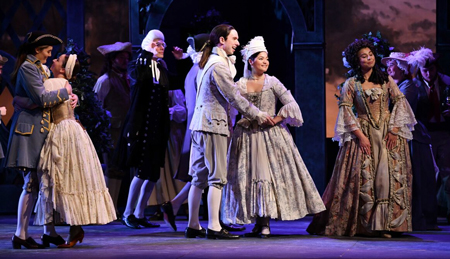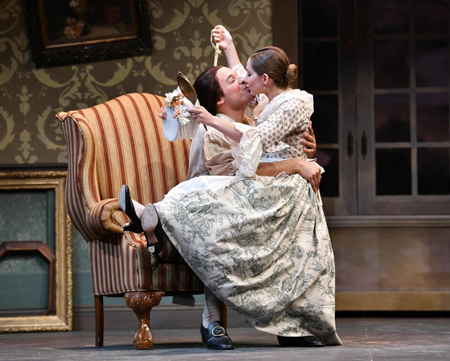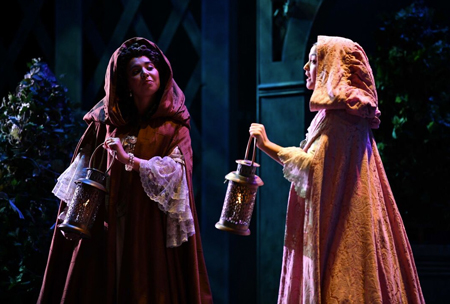by Daniel Hathaway

Since it’s a comedy, you need singer-actors who can put across the jokes and bring out the many twists and turns of the plot. It helps to have stage sets and costume designs that support the libretto and music without calling too much attention to themselves. Finally, you need a canny stage director who has the oversight to bring everything together into a coherent whole. All of these elements were firmly in place on Friday evening when Oberlin Opera Theater brought a delightful production of Figaro to the stage of Hall Auditorium.
Conductor Raphael Jiménez and the Oberlin Chamber Orchestra sparked the evening off with a tight and lively account of the overture. Then the curtain rose and Jeremy K. Benjamin’s lights came up on Laura Carlson-Tarantowski’s attractive period set (intentionally tatty for Act One) and Chris Flaharty’s handsome period costume designs, setting the scene for uniformly strong singing and acting by the Friday-Sunday cast.

Kyle Miller was vocally commanding as the Count, Alexa Weeks delivered sonorous Second-Act arias as the Countess, and the mellifluous Jesse Mashburn brought great comic character to the role of Marcellina. Supporting roles were ably filled by Maggie McGuire (Barbarina), Harrison Heard (Don Basilio), Max Cook (Don Curzio), Simon Nam (Don Bartolo), and Colin Anderson (Antonio).
The chorus, prepared by Gregory Ristow, made a fine impression in their cameo appearances. Stage director Jonathon Field arranged cast and chorus in natural patterns, adding amusing touches like having the village folk fawningly bestow individual flowers on the Countess, then snatch them up one-by-one in disgust. Field saved his signature surprises for the Third-Act finale, when the leads each contributed a little personal break dance to the festivities.
Supertitles for this production were serviceable, if laden with typos and projected so high above the set that necks got a workout keeping up with the text. And did we mention the wigs? In a period production, you’ve got to have them, and Rae Phillips supplied some stunning ones.

In the end, after some rather amazing wrinkles in the plot get ironed out, Figaro and Susanna, and Bartolo and Marcellina are free to get married — the obligatory happy outcome in Mozart comic operas — and forgiving each other, the Count and Countess are reconciled. That’s a much happier fate than, say, Don Giovanni’s. Let the festivities begin!
Photos: Yevhen Gulenko
Published on ClevelandClassical.com November 9, 2017.
Click here for a printable copy of this article



